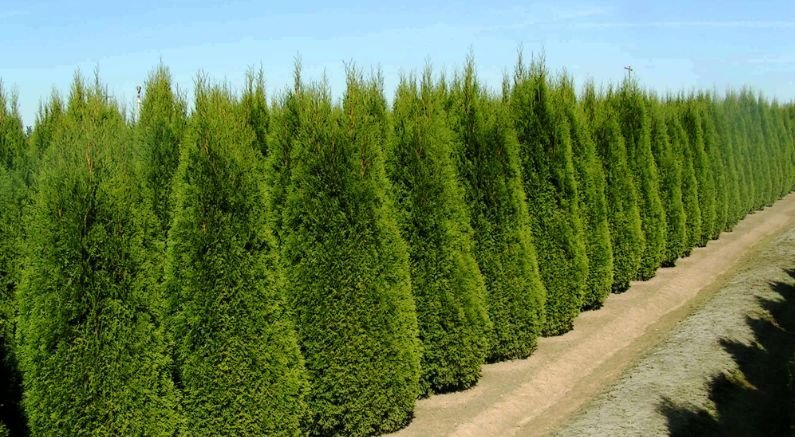
Fluffy, full, and fast-growing, Arborvitae trees and shrubs remain one of the most dependable and versatile evergreens for privacy hedges, windbreaks, and landscaping. With lush, bright green growth that emerges each spring and stays vibrant all year, these soft-textured conifers deliver beauty, screening, and low-maintenance performance in nearly every climate.
Known for their strong root systems, dense branching, and year-round greenery, Arborvitae (or Thuja, meaning "Tree of Life") are the go-to choice for gardeners who want quick privacy without sacrificing elegance. Whether you are planting a single specimen or creating a living wall, understanding how fast Arborvitae grow and how to help them grow faster is key to getting the results you want!
Understanding Arborvitae Growth

Arborvitae are prized for their naturally columnar or pyramidal form, lush evergreen foliage, and adaptability. While growth rates vary by species and growing conditions, many types are considered fast-growing privacy trees.
Arborvitae typically put on the most growth in spring, especially on branches that were lightly pruned the previous year. Young, newly planted Arborvitae focus on root establishment before accelerating upward and outward growth. Once established and in optimal conditions, some varieties can grow an impressive 3 to 5 feet per year.
- Slow growers like First Editions® Technito® Globe Arborvitae reach only 2-3 feet tall at maturity.
- Medium growers like Techny Arborvitae average 2 to 3 feet of annual growth.
- Emerald Green Arborvitae maintain a steady 1 to 2 feet per year.
- Fast growers like American Pillar Arborvitae can gain 3 to 4 feet annually.
- Green Giant Arborvitae are the heavy hitters, sometimes exceeding 5 feet of growth per year until they reach 40 to 50 feet tall.
Why Growth Rate Estimates Vary

No matter how well you care for your Arborvitae, each variety has a genetically determined maximum size and growth rate. As they approach maturity, growth naturally slows. Factors that influence Arborvitae growth include:
- USDA Planting Zone suitability
- Full sun to partial shade exposure (more sun = denser foliage)
- Rich, well-drained soil
- Consistent moisture, especially during establishment
- Arborist mulch to retain soil moisture and regulate temperature
- Balanced evergreen fertilizer when needed
Pruning Arborvitae For Maximum Growth

Knowing how to prune Arborvitae properly can speed up growth and create a fuller hedge.
-
Best timing: Prune in mid to late spring after new growth flushes. Avoid pruning in the fall to prevent winter damage.
- Techniques:
- Pinching encourages new shoots in targeted areas.
- Shearing gives a uniform, manicured appearance.
- Hand pruning allows precision shaping.
- Always cut at a 45-degree angle, about one-quarter inch above an outward-facing bud.
Pruning stimulates the plant to produce two new branches from each cut, thickening the overall shape.
How To Make Arborvitae Grow Faster
Follow these tips to give your Arborvitae the best chance at rapid, healthy growth:
- Start with larger plants for an advanced root system.
- Use Nature Hills Root Booster when planting for long-term nutrient uptake.
- Select a well-drained site to prevent root rot.
- Water consistently using the Finger Test during establishment.
- Apply a 3 to 4-inch layer of arborist mulch.
- Fertilize with an evergreen blend to maintain rich green foliage.
Sit Back and Watch Them Grow!
Once you have set up your Arborvitae for success, they will reward you with steady, reliable growth, dense foliage, and a polished landscape presence. Whether you choose a slow-growing dwarf variety for a foundation planting or a fast-growing Green Giant Arborvitae for instant privacy, these evergreens prove why they remain one of the top choices for gardeners everywhere.
Happy Planting!


